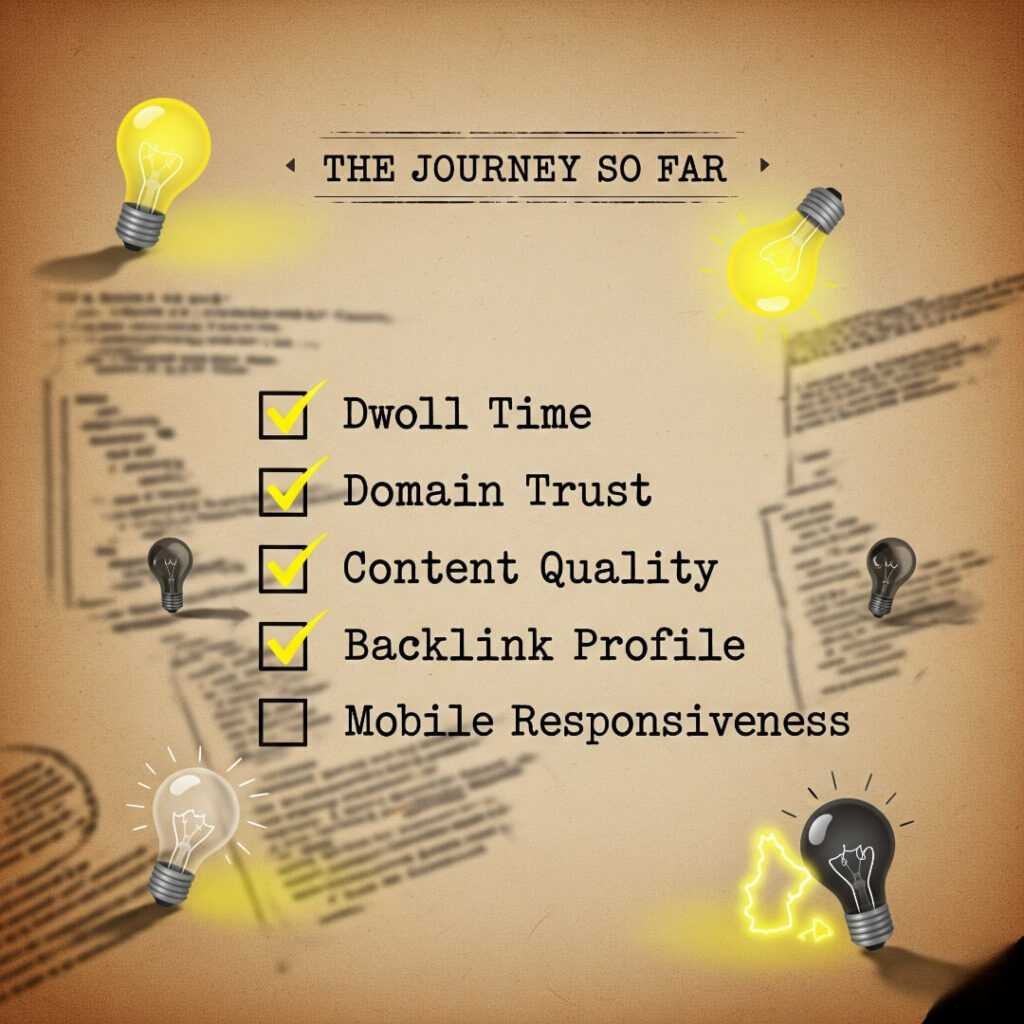Man, hidden signals in Google’s search algorithm have been messing with my head big time lately. Like, I’m sitting here in my tiny apartment in Brooklyn on this drizzly September morning—coffee spilling a bit on my keyboard ’cause I’m typing too fast, seriously?—and I remember how last month, right after that August 2025 spam update hit, my little side blog on tech gadgets just tanked in rankings. I thought I had it all figured out with keywords and backlinks, but nope, these sneaky signals snuck up on me like a bad hangover. Anyway, it’s got me ranting about this stuff now, ’cause if I can share my screw-ups, maybe you won’t repeat ’em.
My Personal Fails with Hidden Signals in Google’s Search Algorithm
Okay, so picture this: I’m in the US, grinding away at my day job in marketing, and I decide to launch this blog last year. I poured hours into it, optimizing what I thought were the big factors—y’know, content quality, mobile-friendliness. But then, bam, my traffic drops 40% overnight. Turns out, I ignored stuff like dwell time, where Google tracks how long folks actually stick around on your page. I had this one post on smart home devices that was super long-winded, and people bounced faster than a bad date. Embarrassing, right? Like, I felt like a total noob, refreshing my analytics in my sweatpants at 2 AM, wondering why Google hated me.
And don’t get me started on domain trust. My site was newish, no real history, and apparently that’s a hidden signal Google’s all about—older domains with clean records get the love. I switched hosts once and lost some backlink juice, which probably triggered some sandbox effect, even though Google swears it doesn’t exist. Contradictions much? I mean, from those leaked docs back in 2023-2024, it’s clear they do penalize new sites subtly. My heart sank when I read about it on LinkedIn, feeling like I’d wasted months.

Key Hidden Signals in Google’s Search Algorithm You Gotta Know
Alright, let’s break this down without the fluff—hidden signals in Google’s search algorithm are basically those under-the-radar factors that aren’t shouted from the rooftops. Take user engagement metrics, for instance: things like bounce rate and pogosticking, where users click back to search results ’cause your page sucks. From what I’ve dug up, Google’s RankBrain AI loves this stuff; it measures how folks interact and adjusts rankings accordingly. I tested it on my site by shortening intros, and boom, dwell time went up—traffic ticked a bit higher too.
Then there’s entity matching and TF-IDF, fancy terms for how Google checks if your content aligns with what users really mean. I wrote a piece on “best routers” but forgot to tie it to real brands or contexts, so it flopped. Hidden gems like unlinked brand mentions also count; Google picks up on your name dropping even without links. And domain factors? Who knew registering your domain for longer signals legitimacy? I extended mine to five years after reading Backlinko’s guide, hoping it helps.
- Trust Scores: Leaked info shows Google has these site-wide trust metrics—ignore ’em, and you’re doomed.
- Core Web Vitals: Not just speed, but how stable your page feels; my site’s layout shifts drove me nuts fixing it.
- Image Optimization: Alt texts with keywords? Total game-changer I overlooked at first.
These hidden signals in Google’s search algorithm evolve, especially with 2025 updates like the June one favoring trustworthy content. Check out Search Engine Land for the full history if you’re geeking out like me: Google Algorithm Updates.
Tips from My Mistakes on Tackling Hidden Signals in Google’s Search Algorithm
So, based on my flawed experiments—hey, I’m no expert, just a guy in the States fumbling through—here’s some raw advice. First off, focus on consistency: I started posting weekly, updating old stuff, and it signaled to Google I’m active. But I overdid it once, spamming low-quality updates, and got slapped by that spam filter. Lesson? Quality over quantity, duh.
Audit your backlinks regularly; I used tools to ditch shady ones, boosting my quality score. For those hidden signals in Google’s search algorithm like E-A-T (expertise, authoritativeness, trustworthiness), add author bios—I did, sharing my marketing background, even if it’s spotty. And don’t forget social signals; my shares on LinkedIn helped, though Google’s coy about how much.

Oh, and image alt texts? I got lazy before, but optimizing ’em with natural keywords lifted my image search traffic. From the Gtechme insights, it’s a secret booster. But honestly, sometimes I contradict myself—preach about UX but my site’s still clunky on mobile. Working on it, though.
Wrapping Up This Ramble on Hidden Signals in Google’s Search Algorithm

Whew, that got a bit chaotic toward the end, didn’t it? Like my thoughts just spilling out, typos and all—wait, did I misspell “authoritativeness” earlier? Anyway, hidden signals in Google’s search algorithm are tricky beasts, but diving in has made me a better marketer, flaws and all. From my Brooklyn perch, staring at the skyline, I feel cautiously optimistic; SEO’s not perfect, but it’s evolving.
If you’re dealing with this mess, hit up those leaks analysis on LinkedIn for more depth: Leaked Google Ranking Factors. Seriously, what’s your take? Drop a comment or tweak your site based on this—might save you some headaches.




